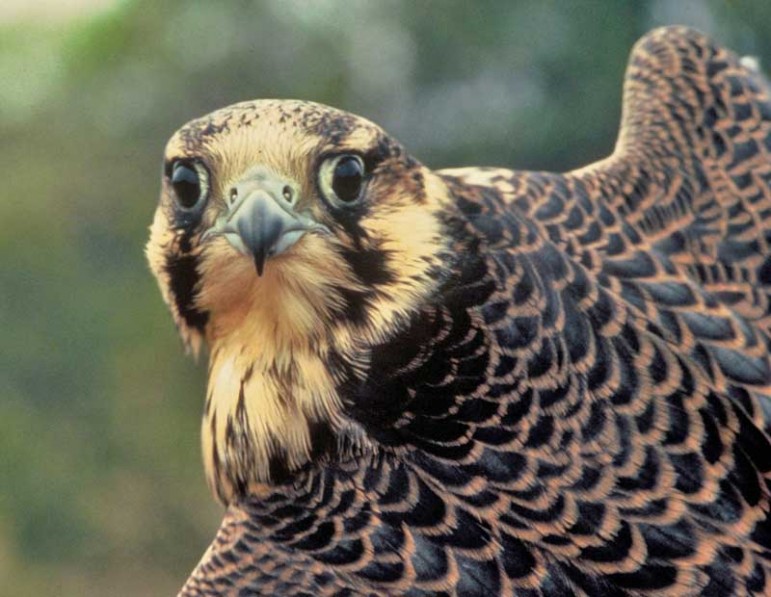
A pair of Grand Teton peregrine falcons nesting in a popular climbing spot had prompted a temporary closure of the area.
A public closure of a popular climbing spot in Grand Teton National Park has been lifted after a peregrine falcon nesting pair has successfully fledged a chick.
A closure at Baxter’s Pinnacle and Descent Gully near the mouth of Cascade Canyon enacted May 1 was successful and has been lifted, according to a statement released by the park’s public affairs office.
Due in part to the protection provided by this wildlife closure, the adult falcons successfully reared and fledged one chick.
Park officials said the Baxter’s Pinnacle peregrines experienced little to no human interruption during their incubation and chick-rearing phases thanks to active support from the park’s two authorized concessioners for guided climbing services, and to the cooperation of Jackson Hole’s climbing community that demonstrated responsible behavior and respected the closure.
Peregrines are cliff-nesters and can be sensitive to human disturbance, especially during their nesting period.
Peregrine falcons are territorial and aggressive birds, especially while nesting and incubating eggs. They become even more protective after their chicks hatch.
The peregrine falcon is among the world’s fastest birds, flying at up to 55 mph and diving at more than 200 mph while defending territory or attacking prey.
Decimated by the harmful effects of the pesticide DDT, biologists believe that peregrine falcons were virtually eliminated from the greater Yellowstone area by the 1960s.
In 1980, efforts to reintroduce peregrine falcons to Grand Teton were initiated, in conjunction with similar efforts elsewhere in the region and western United States.
Between 1980 and 1986, 52 fledgling falcons were released at several sites in the Teton Range; 7-8 birds were released each time. After sufficient recovery was achieved, peregrines were delisted from the endangered species list in 1999. However, peregrine falcons remain a species of concern in Grand Teton, where only four nesting pairs exist. The Baxter’s nest area was first discovered in 2010, and it has produced one chick in three of the last four years (2010, 2011, and 2013). One other Teton site fledged two chicks this year.
Park officials say the public closure also served to protect climbers from the peregrines as they will defend their nest site by dive-bombing perceived intruders.
Seasonal and temporary closures for wildlife protection are common in Grand Teton to protect both wildlife and park users. Entering a posted wildlife closure is a violation that can result in a citation and fine under the code of federal regulations.
Contact Yellowstone Gate at 307-213-9818 or info@yellowstonegate.com.
